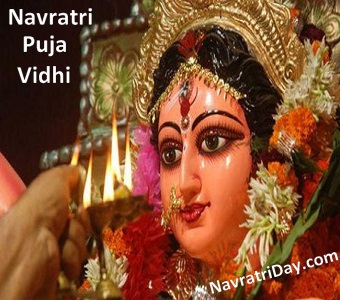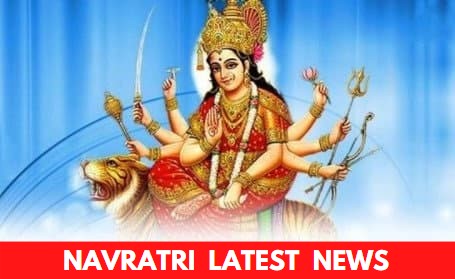Puja wahi safal kehlati hai - jo pure vidhi vidhan se hoi.”
Navratri Puja Vidhi (Procedure):
Navratri Puja is offered to request the almighty Goddess for peace, prosperity and sustenance of the same. It is very important to know the right method to conduct the puja.

- First and foremost is to ensure very clean and tidy surroundings for the Navratri Puja. As it is a very well-known fact that, “Cleanliness is Godliness.” Below are the navratri puja procedure rituals, which one need to follow..
A kalawa is tied to the pitcher’s helm followed by placing the beetle leaves at the opening in a coverall formation and lidding the same by placing a coconut amidst the leaves. This pitcher is placed in front of the idol or photograph at the praying location. The best time for the sthapna is considered to be in the early hours of the morning. Know navratri Ghatsthapana Date and time to start the navratri festival.
If people opt to instil an Akhand Jyot (never ending lamp) for the 9 days, it has to be a protocol for atleast one person to stay in the house throughout the duration of the Navratri. Akhand jyot is lit at the time of sthapna.
People place a hand imprint dipped in turmeric paste of the eldest member in the family on a piece of paper next to the chowky. It is believed to work as a gateway for the Goddess to shower her blessings.
After the sthapna, people should follow a strict routine for praying two times i.e. morning and evening. In the morning, the verses from the Durga Saptashati are to be recited after singing the hymn (Aarti). Many people fast during the 9 days wherein they eat proper food only one time in the day and are allowed to eat on Falari Aahar (Fasting food) during the other times.






